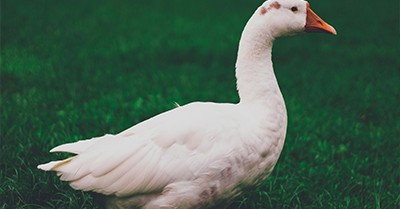Mother Goose Day is on the 1st of May. This day offers a magical opportunity to ignite young imaginations and introduce children to the timeless joy of nursery rhymes and storytelling. Here’s a comprehensive guide—with practical ideas and a sample program plan.
Why Celebrate Mother Goose Day?
Mother Goose is synonymous with creative language, playful rhymes, and imaginative worlds that have captivated children for generations. Celebrating this day in your setting can:
-
Boost Language Development: Nursery rhymes encourage phonemic awareness and early literacy skills.
-
Foster Social and Emotional Growth: Shared storytelling builds connections between children and educators.
-
Encourage Creativity: The whimsical themes inspire art, movement, and pretend play.
-
Connect with Families: It’s an opportunity to invite parents to share family favorites, making home and service a seamless learning environment.
Key Elements for a Magical Mother Goose Celebration
-
Themed Environment and Decorations
-
Visual Magic: Decorate your space with pastel colours, images of classic Mother Goose characters (like Humpty Dumpty, Jack and Jill, or Little Miss Muffet), and playful banners.
-
Interactive Displays: Set up a “Mother Goose Story Wall” where children (and families) can add drawings or sticker representations of their favourite nursery rhyme characters.
-
-
Storytelling and Music
-
Story Corner: Arrange a cozy seating area with soft mats or cushions where educators read aloud popular Mother Goose rhymes.
-
Puppet and Finger Plays: Use puppets or hand shadows to dramatize stories, engaging both infants with gentle movements and toddlers with interactive play.
-
Sing-Along Sessions: Integrate familiar songs and nursery rhymes, encouraging participation through clapping, swaying, and gentle dancing.
-
-
Sensory and Movement Activities
-
Rhyming Treasure Hunt: Hide picture cards of nursery characters around the room. Older children can match pairs based on clues, while younger ones explore tactilely with safe, textured cards.
-
Action Songs: Incorporate movements into songs such as “Ring Around the Rosie” or “Jack and Jill,” adapting the activities to be soft and inclusive for all developmental stages.
-
Finger Painting: Offer a sensory table with washable, non-toxic paints where children create impressions of their favourite Mother Goose characters.
-
-
Art, Craft, and Dramatic Play
-
Craft Workshops: Create simple crafts like making character masks or decorating paper crowns. These projects can be scaled—from scribbling for infants (using finger paints) to guided arts for toddlers.
-
Dress-Up and Role Play: Organise a mini theatre area where children can dress up and enact short, playful skits from well-known rhymes. Costumes can be as simple as paper hats, scarves, and props.
-
-
Family Involvement
-
Story Sharing: Invite parents to come in and share a favorite Mother Goose rhyme or a childhood memory linked to these stories.
-
Digital Portfolios: Capture moments from the celebration and create a digital storybook that families can view later, reinforcing the shared learning and joy.
-
Sample Mother Goose Day Program Plan
Here’s a sample day plan to get your creative ideas flowing. Adjust the timings and activities based on your group’s rhythms:
| Time | Activity | Focus & Objectives | Materials/Setup |
|---|---|---|---|
| 9:00 – 9:30 AM | Welcome Circle & Mother Goose Introduction | Create a warm welcome using a Mother Goose hat or prop; introduce the day’s theme | Decorated welcome area with banners, photos of nursery rhyme characters |
| 9:30 – 10:00 AM | Storytelling Session | Read aloud a selected Mother Goose story; use puppets for dramatization | Storybooks, puppets, soft seating (cushions/mats) |
| 10:00 – 10:30 AM | Sensory Movement & Music | Engage infants and toddlers with action songs and gentle movements | Musical instruments (shakers, tambourines), space for safe movement |
| 10:30 – 11:00 AM | Rhyming Treasure Hunt / Interactive Display | Encourage language skills and exploration through fun matching games | Picture cards, a simple treasure hunt map, interactive display setup |
| 11:00 – 11:30 AM | Art & Craft Activity | Create a Mother Goose-themed craft; adapt activities for all ages | Finger paints, paper, safe scissors, glue, craft materials |
| 11:30 – 12:00 PM | Dramatic Play / Free Exploration | Allow children to role-play and express creatively; quiet observation | Dress-up corner, simple costumes, props, free play space |
| 12:00 – 12:30 PM | Closing Circle & Family Sharing | Recap the day; invite families (if available) to share thoughts or recite a rhyme | A comfortable seating arrangement, reflection prompts, photos for display |
-
Observation and Reflection: Record how each child responds to different segments. This helps refine future celebrations.
-
Team Collaboration: Discuss with colleagues which activities spark the most interest and how you might adapt them for varying developmental needs.
-
Digital Enhancements: Use simple digital tools to capture moments, creating a lasting memory book that can evolve each year.
This celebration not only honours cherished nursery rhymes but also becomes a vibrant, multi-sensory experience that enhances language, emotional, and social skills.
Further Reading
The Importance Of Nursery Rhymes For Children
10 Nursery Rhymes In Spanish, French, German, Italian, Japanese
Incorporating Cultural Text Into Nursery Rhymes
Rhymes Posters
Rhymes
